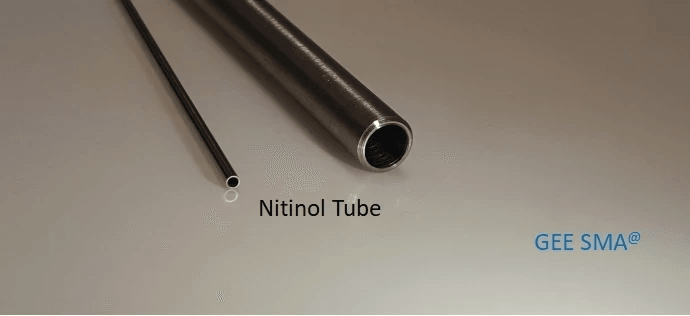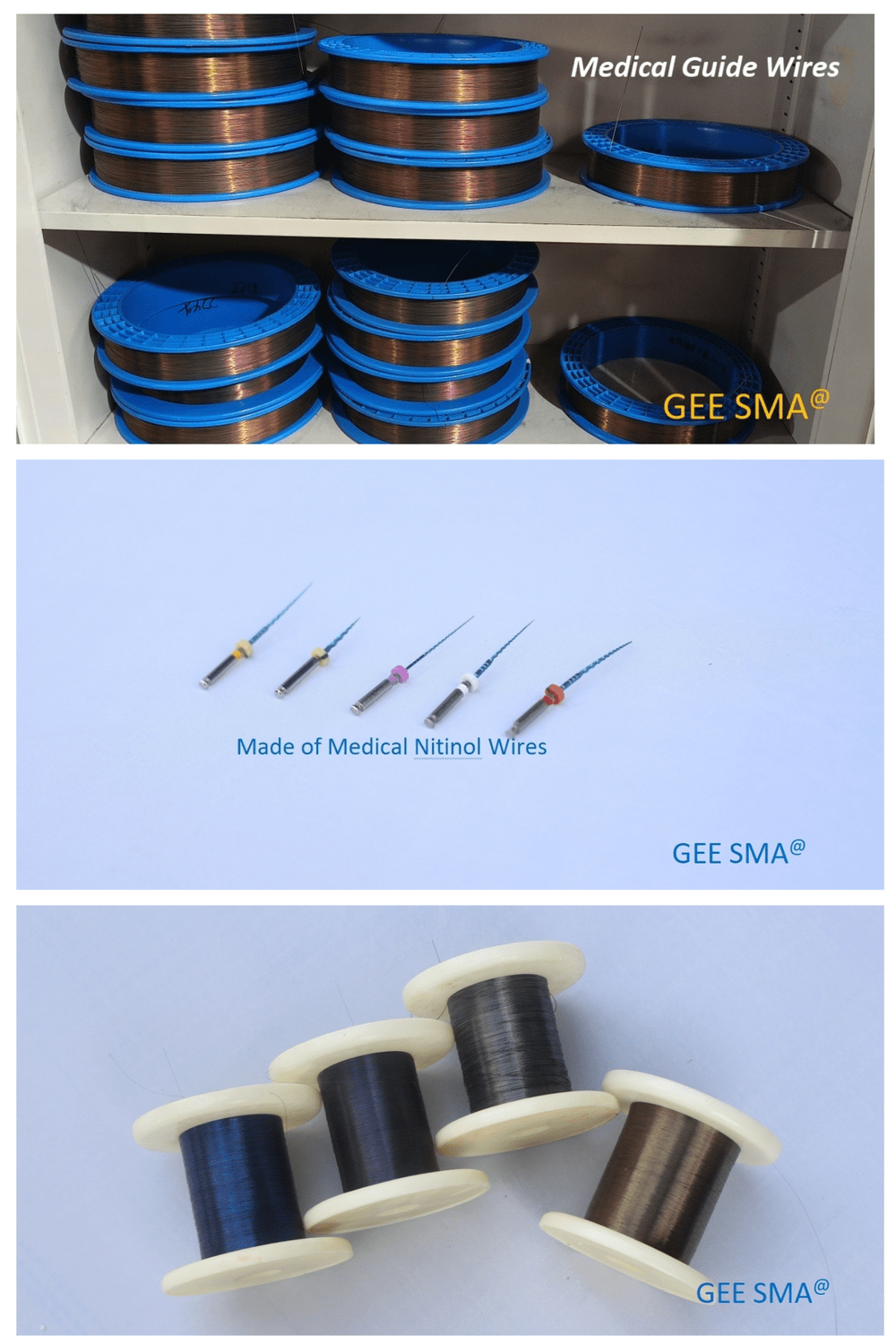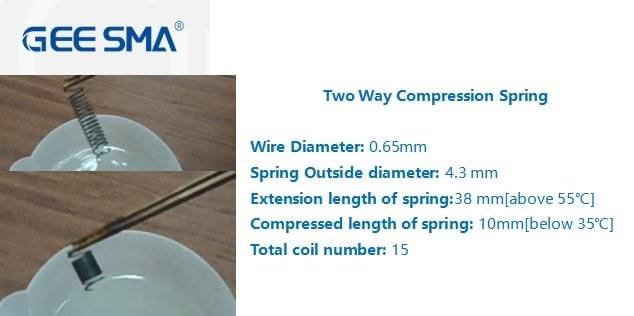Introduction
In the ever-evolving field of medical technology, self-expanding nitinol stents have emerged as a revolutionary solution for treating various vascular conditions. These devices, made from a unique alloy that combines nickel and titanium, are designed to expand automatically upon deployment, providing critical support within blood vessels. Their innovative design not only enhances patient outcomes but also showcases the remarkable potential of materials science in healthcare.
Overview of Self-Expanding Stents
Self-expanding stents, particularly those crafted from nitinol, represent a significant advancement in interventional cardiology and other medical fields. Unlike traditional stents that require inflation to expand, these stent en nitinol devices utilize the shape memory properties of nitinol to open up automatically at body temperature. This feature simplifies the deployment process and reduces the risk of complications during procedures.
Importance of Nitinol in Medical Devices
Nitinol plays a crucial role in the effectiveness and reliability of modern medical devices, especially when it comes to stent in nitinol applications. Its unique characteristics—such as flexibility, strength, and biocompatibility—make it an ideal choice for creating durable yet adaptable stents that can withstand the dynamic environment within blood vessels. As a result, nitinol stents have become synonymous with improved patient safety and comfort.
The Role of GEE SMA in Innovation
GEE SMA has positioned itself at the forefront of innovation by harnessing the potential of self-expanding nitinol stents in their product offerings. With an unwavering commitment to quality and cutting-edge technology, GEE SMA is dedicated to advancing medical solutions that enhance patient care across various disciplines. Their contributions not only push the boundaries of what's possible with nitinol but also pave the way for future advancements in minimally invasive procedures.
Understanding Self-Expanding Nitinol Stents

Self-expanding nitinol stents have revolutionized the field of vascular interventions, providing a minimally invasive solution for various medical conditions. These innovative devices are designed to automatically expand upon deployment, offering a reliable means of keeping blood vessels open. By utilizing the unique properties of nitinol, these stents ensure optimal performance and patient outcomes.
What is a Self-Expanding Stent?
A self-expanding stent is a tubular device made from materials that can change shape in response to temperature or mechanical force. Specifically, a stent en nitinol utilizes the memory properties of nitinol to expand automatically once it reaches body temperature after being delivered in a compressed form through a catheter. This feature not only simplifies the deployment process but also enhances the stent's ability to adapt to varying anatomical conditions within the blood vessel.
Self-expanding nitinol stents are particularly beneficial for treating conditions such as stenosis or blockages in arteries and veins. Their design allows them to conform closely to the vessel walls, minimizing trauma and promoting better healing. Moreover, their ability to maintain patency over time makes them an essential tool in modern medicine.
The Science Behind Nitinol
Nitinol is an alloy composed primarily of nickel and titanium, renowned for its unique shape memory and superelastic properties. When heated above a specific temperature, this alloy can return to its predetermined shape; this characteristic is crucial for self-expanding nitinol stents as it allows them to revert from their compact delivery form into their functional state upon reaching body temperature. Additionally, nitinol's superelasticity enables it to withstand significant deformation while maintaining its structural integrity.
The science behind nitinol also explains why it's favored in medical applications: it exhibits excellent biocompatibility, reducing the likelihood of adverse reactions when implanted in the human body. This compatibility is vital for long-term success in patients receiving these devices since complications can lead to serious health issues or additional procedures. Consequently, understanding how nitinol functions at both molecular and macroscopic levels provides insight into why it’s become synonymous with modern vascular treatment options.
How Nitinol Enhances Stent Functionality
Nitinol enhances stent functionality through its remarkable mechanical properties that allow self-expanding nitinol stents to perform effectively under various physiological conditions. The combination of shape memory and superelasticity means that these devices can adapt dynamically as they encounter changes in blood flow or vessel diameter during normal bodily movements or pathological changes like plaque buildup. This adaptability ensures that the nitinol stent maintains optimal contact with vessel walls while minimizing stress concentration points that could lead to failure.
Moreover, self-expanding nitinol stents offer improved radial strength compared to traditional metal options; this increased strength contributes directly to their ability to resist recoil after deployment—an important factor for ensuring long-term patency within arteries or veins post-procedure. Additionally, by providing better flexibility than rigid alternatives, these stents facilitate easier navigation through complex vascular pathways during insertion.
In summary, incorporating advanced materials like nitinol into self-expanding designs has significantly enhanced functionality across various medical procedures involving vascular interventions—resulting in improved patient care outcomes overall.
The Delivery System: A Game Changer

In the realm of interventional cardiology, the delivery system for self-expanding nitinol stents has emerged as a revolutionary advancement. This sophisticated system is designed to facilitate the precise placement of nitinol stents, ensuring optimal outcomes for patients. With innovative features and enhanced functionality, these delivery systems are reshaping how stent in nitinol technology is utilized in medical procedures.
Key Features of the Delivery System
The delivery system for self-expanding nitinol stents boasts several key features that set it apart from traditional methods. First and foremost, its flexible design allows for easier navigation through complex vascular pathways, making it ideal for challenging anatomies. Additionally, advanced deployment mechanisms ensure that the stent en nitinol is accurately positioned at the target site, minimizing trauma to surrounding tissues.
Another standout feature is the low-profile catheter used in these delivery systems. This not only enhances maneuverability but also reduces patient discomfort during the procedure. Furthermore, many modern systems incorporate real-time imaging capabilities that provide clinicians with immediate feedback on placement accuracy and vessel integrity.
Advantages Over Traditional Delivery Methods
When comparing self-expanding nitinol stent delivery systems to traditional methods, several advantages become apparent. For starters, these advanced systems significantly reduce procedural times due to their streamlined design and efficient deployment processes. This efficiency translates into less time spent under anesthesia and quicker recovery for patients—always a win-win situation!
Moreover, the precision offered by modern delivery systems minimizes complications associated with misplacement or damage during deployment of a stent in nitinol. Patients benefit from reduced rates of restenosis—the re-narrowing of blood vessels—thanks to improved accuracy in placing these innovative devices. Ultimately, this leads to better long-term outcomes and increased patient satisfaction.
Case Studies of Successful Deployments
Real-world examples highlight just how transformative self-expanding nitinol stent delivery systems can be in clinical settings. In one notable case study involving a patient with severe coronary artery disease, a team successfully deployed a nitinol stent using an advanced delivery system that resulted in immediate restoration of blood flow without complications—a testament to both technology and skill.
Another case involved a complex peripheral artery intervention where traditional methods had previously failed due to anatomical challenges. The use of a specialized delivery system allowed clinicians to navigate tricky curves effectively and place the stent en nitinol precisely where needed—leading to an impressive recovery trajectory for the patient involved.
These case studies underscore not only the effectiveness but also the critical role that innovative delivery systems play in enhancing patient care through improved deployment techniques for self-expanding nitinol stents.
Benefits of Nitinol Stents in Medical Procedures

The advent of self-expanding nitinol stents has revolutionized the landscape of medical procedures, particularly in vascular interventions. These stents, made from a unique nickel-titanium alloy known as nitinol, offer a plethora of benefits that enhance patient safety and recovery. As we delve into the advantages of using stent en nitinol, it becomes clear why they are becoming the preferred choice among healthcare professionals.
Enhanced Biocompatibility
One of the standout features of a nitinol stent is its exceptional biocompatibility. This means that when implanted in the body, these self-expanding nitinol stents interact favorably with biological tissues, minimizing adverse reactions. The unique properties of nitinol allow for better integration with surrounding tissues, reducing inflammation and promoting healing—a crucial factor for successful outcomes in patients.
Moreover, the smooth surface finish and flexibility of stent in nitinol contribute to reduced friction against blood vessels. This leads to less irritation during deployment and long-term placement within the arterial environment. Ultimately, enhanced biocompatibility translates to improved patient comfort and satisfaction post-procedure.
Reduced Risk of Complications
When it comes to medical procedures involving stenting, complications can be a significant concern; however, self-expanding nitinol stents are designed to mitigate these risks effectively. The inherent properties of nitinol allow for gradual expansion upon deployment, which helps match the diameter of blood vessels more accurately than traditional materials would allow. This precise fit reduces the likelihood of complications such as restenosis or thrombosis.
Additionally, studies have shown that patients receiving a nitinol stent experience fewer instances of adverse events compared to those with conventional metal stents. The combination of flexibility and strength inherent in these devices allows them to adapt better within dynamic environments like blood vessels without causing damage or irritation. Thus, opting for a stent en nitinol not only enhances procedural success but also promotes overall patient safety.
Long-Term Patient Outcomes
The long-term benefits associated with using self-expanding nitinol stents cannot be overstated; they significantly influence patient outcomes after vascular interventions. Research indicates that patients who receive a nitinol stent often enjoy extended periods without re-intervention due to its durability and effective performance over time. This longevity is critical for individuals suffering from chronic conditions requiring repeated treatments.
Moreover, many studies reveal that patients report higher quality-of-life metrics following procedures involving a nitinol stent compared to other materials used earlier on in cardiovascular interventions. With lower rates of complications and enhanced biocompatibility contributing to quicker recovery times, it's no surprise that healthcare providers increasingly favor these innovative devices for their patients' needs—making the case stronger than ever for choosing a self-expanding nitinol stent.
GEE SMA: Pioneering Nitinol Technology

GEE SMA stands at the forefront of medical innovation, particularly in the realm of self-expanding nitinol stents. With a mission to revolutionize healthcare through advanced materials and technologies, GEE SMA focuses on creating devices that enhance patient outcomes and streamline medical procedures. Their dedication to pioneering solutions has made them a key player in the development of stent en nitinol.
Company Overview and Mission
Founded with a vision to improve lives through cutting-edge technology, GEE SMA specializes in the design and manufacturing of innovative medical devices, including the highly sought-after nitinol stent. The company’s mission emphasizes quality, safety, and efficacy while pushing the boundaries of what is possible with self-expanding nitinol stents. By harnessing the unique properties of nitinol, they aim to provide healthcare professionals with tools that are not only effective but also enhance patient comfort during procedures.
Contributions to Space Missions
While GEE SMA may primarily be known for its contributions to medical technology, its innovations extend beyond Earth’s atmosphere. The company has played a pivotal role in developing materials used in space missions, showcasing their expertise in creating reliable solutions under extreme conditions. This experience translates back into their work on stent in nitinol as they apply aerospace-grade standards to ensure that every self-expanding nitinol stent meets rigorous performance benchmarks.
Commitment to Quality and Innovation
At GEE SMA, quality is not just a buzzword; it’s a core principle that drives every aspect of their operations. The company employs stringent testing protocols and adheres to international standards for medical device manufacturing, ensuring that each nitinol stent is safe and effective for patients worldwide. Their commitment to innovation means they are constantly exploring new technologies and designs for self-expanding nitinol stents, aiming for enhancements that will further reduce complications and improve long-term outcomes.
Future Trends in Nitinol Stent Development

The future of self-expanding nitinol stents is bright, with innovation driving advancements that promise to improve patient outcomes and procedural efficiency. As the medical field embraces new technologies, we can expect to see significant enhancements in stent design and delivery systems. These developments will not only enhance the functionality of nitinol stents but also revolutionize how they are deployed in various medical procedures.
Emerging Technologies in Stent Design
Emerging technologies are reshaping the landscape of stent design, particularly for the self-expanding nitinol stent. Innovations such as bioresorbable materials and advanced coating techniques are being explored to improve drug delivery and reduce restenosis rates. Additionally, 3D printing technology is paving the way for customized stents tailored to individual patient anatomies, enhancing the effectiveness of each stent in nitinol.
Moreover, researchers are investigating smart materials that can respond dynamically to physiological changes within the body. These next-generation nitinol stents could potentially adapt their shape or drug release profiles based on real-time feedback from their environment. The integration of sensors into these devices may facilitate better monitoring of vascular health post-implantation.
Potential Enhancements in Delivery Systems
The delivery systems for self-expanding nitinol stents are also poised for significant enhancements that will streamline procedures and increase success rates. Next-generation delivery mechanisms may incorporate robotic assistance or advanced imaging techniques, allowing for more precise placement during minimally invasive surgeries. This would mark a departure from traditional methods, making procedures faster and less traumatic for patients.
Moreover, improvements in catheter designs aim to minimize complications associated with deployment while maximizing ease of use for healthcare professionals. Enhanced flexibility and trackability will enable smoother navigation through complex vascular pathways when deploying a stent en nitinol. With these advancements, healthcare providers can expect fewer procedural challenges and improved patient experiences.
The Impact of Research on Patient Care
Ongoing research into self-expanding nitinol stents is crucial for advancing patient care across various medical disciplines. Clinical studies focusing on long-term outcomes associated with these devices provide invaluable insights into their efficacy and safety profiles over time. As knowledge grows about how different designs affect healing processes, it informs better practices that ultimately lead to improved health outcomes.
Furthermore, collaboration between academia and industry is fostering an environment ripe for innovation that directly benefits patients undergoing procedures involving a nitinol stent. By prioritizing research-driven approaches, stakeholders can ensure that new developments align with real-world clinical needs while addressing existing gaps in treatment options. This synergy will help maintain momentum toward creating safer and more effective solutions for patients requiring vascular interventions.
Conclusion
In conclusion, the advancements in self-expanding nitinol stents have transformed the landscape of vascular interventions and other medical procedures. These innovative devices, made from a unique alloy of nickel and titanium, offer numerous benefits such as enhanced biocompatibility and reduced complication rates. The remarkable properties of the nitinol stent allow for greater flexibility and adaptability within the body, making them a preferred choice for many healthcare providers.
Summary of Nitinol Stents' Benefits
The benefits of nitinol stents are manifold, primarily revolving around their ability to expand automatically once deployed within a vessel. This self-expanding nitinol stent design not only ensures an optimal fit but also minimizes trauma to surrounding tissues during insertion. Furthermore, studies have shown that patients receiving stent en nitinol experience fewer complications and improved long-term outcomes compared to traditional options.
The Importance of Innovative Delivery Systems
Innovative delivery systems play a crucial role in maximizing the effectiveness of self-expanding nitinol stents during procedures. These advanced systems enhance precision and control during deployment, ensuring that the stent in nitinol is positioned accurately where it's needed most. By offering advantages over traditional delivery methods—such as reduced procedural time and improved safety—these systems are game changers in the realm of interventional medicine.
Looking Ahead: The Future of Stent Technology
Looking to the future, we can expect continued evolution in the design and functionality of self-expanding nitinol stents. Emerging technologies will likely introduce even more sophisticated delivery systems that enhance patient care while minimizing risks associated with traditional interventions. As research progresses, we may witness groundbreaking innovations that further solidify the position of nitinol stents as indispensable tools in modern medicine.

